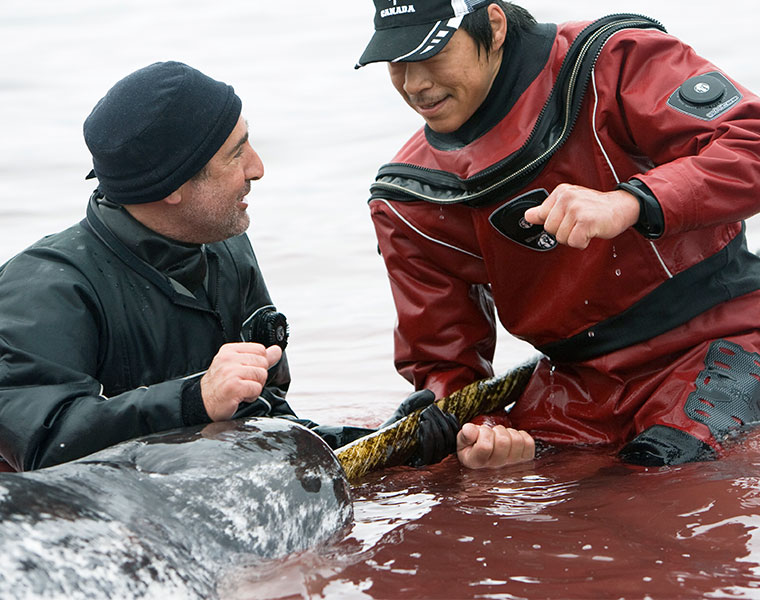Martin Nweeia of Case Western Reserve University forms international research team to study coronavirus susceptibility of arctic whale
While most of the global effort to contain COVID-19 focuses on its continuing human cost, a team of researchers has formed to focus on protecting the next potential wave of virus victims: wildlife.
Martin Nweeia—an assistant professor at the Case Western Reserve University School of Dental Medicine—will lead an effort to learn more about how the SARS-CoV-2, the virus that causes COVID-19, may spread to certain non-domesticated animals.
The team will focus on the narwhal, an arctic whale with a 9-foot tusk and a high potential for infection.
“Scientists have a difficult-enough time keeping up with the human spread of this virus, so we are eager to monitor an animal that is particularly susceptible to infection,” said Nweeia, who is also a lecturer at Harvard School of Dental Medicine who has studied the narwhal (pronounced nar-whale), with indigenous experts on the animal for two decades.

“If this coronavirus were to gain a foothold in wildlife, there could be potential cascading impacts for ecosystems worldwide, and the communities that rely on them,” he added. The team’s findings may steer how to best prevent or counteract a potentially looming catastrophe.
Researchers already know that the virus can spread to animals—the most well-known cases were those of the lions and tigers infected at the Bronx Zoo; health officials in Spain recently ordered the culling of over 92,000 mink at a farm hit by the coronavirus this summer—and in the Netherlands more than 1 million mink were slaughtered to prevent the spread of the disease.
In addition, collaborators with Nweeia’s team have started studying the susceptibility of the Ugandan lowland gorilla—a species that Nweeia said “could be wiped” out if just one contracts COVID-19.
Protecting the narwhal
Narwhal, like other toothed whales, do not have the customary immune systems to combat viruses. Making matters worse, the SARS-CoV-2 virus has a higher capacity to bind to certain receptors—essentially, infection points—in the animals, Nweeia said.
With a ban on such research in international Arctic waters still in place, Nweeia is contracting with local Inuit residents and Canadian organizations to collect tissue samples from the narwhal. Those samples will be eventually shipped to the U.S. in liquid nitrogen for analysis.
Researchers will determine whether living cells from these collected samples can contract virus.
“People wonder whether the virus can survive in Arctic sea water,” Nweeia said, “but they forget that the Arctic is among the least salient oceans in the world, with many freshwater inlets that are inviting to a variety of marine animals.”
In fact, that coldness of water could actually allow the virus to survive longer, he added.
Identifying the threats
In addition to identifying the risk COVID-19 poses to wildlife, the team has its sights set on mitigating the modes of potential pathways of human-to-wildlife transmission.
SARS-CoV-2 can survive in wastewater—a scary prospect Nweeia said, in a world where an estimated 2.2 million people die every year from contaminated water alone. Thus, researchers will study the impact of how untreated water can affect the potential spread of the virus on wildlife as well.
“This research is about prevention, not reaction,” Nweeia said. “By better understanding what can happen, we’re trying to stay ahead of problems and prevent them.”
Joining Nweeia in the research effort are Gladys Kalema-Zikusoka, the founder and CEO of the Ugandan nonprofit, Conservation Through Public Health, and Harris Lewin, a professor at the University of California, Davis. Lewin served as lead author of an August publication from the Proceedings of the National Academy of Sciences that identified several species that could be at higher risk of infection because SARS-CoV-2 can bind more easily to certain receptors they possess.
For more information, contact Colin McEwen at colin.mcewen@case.edu.

